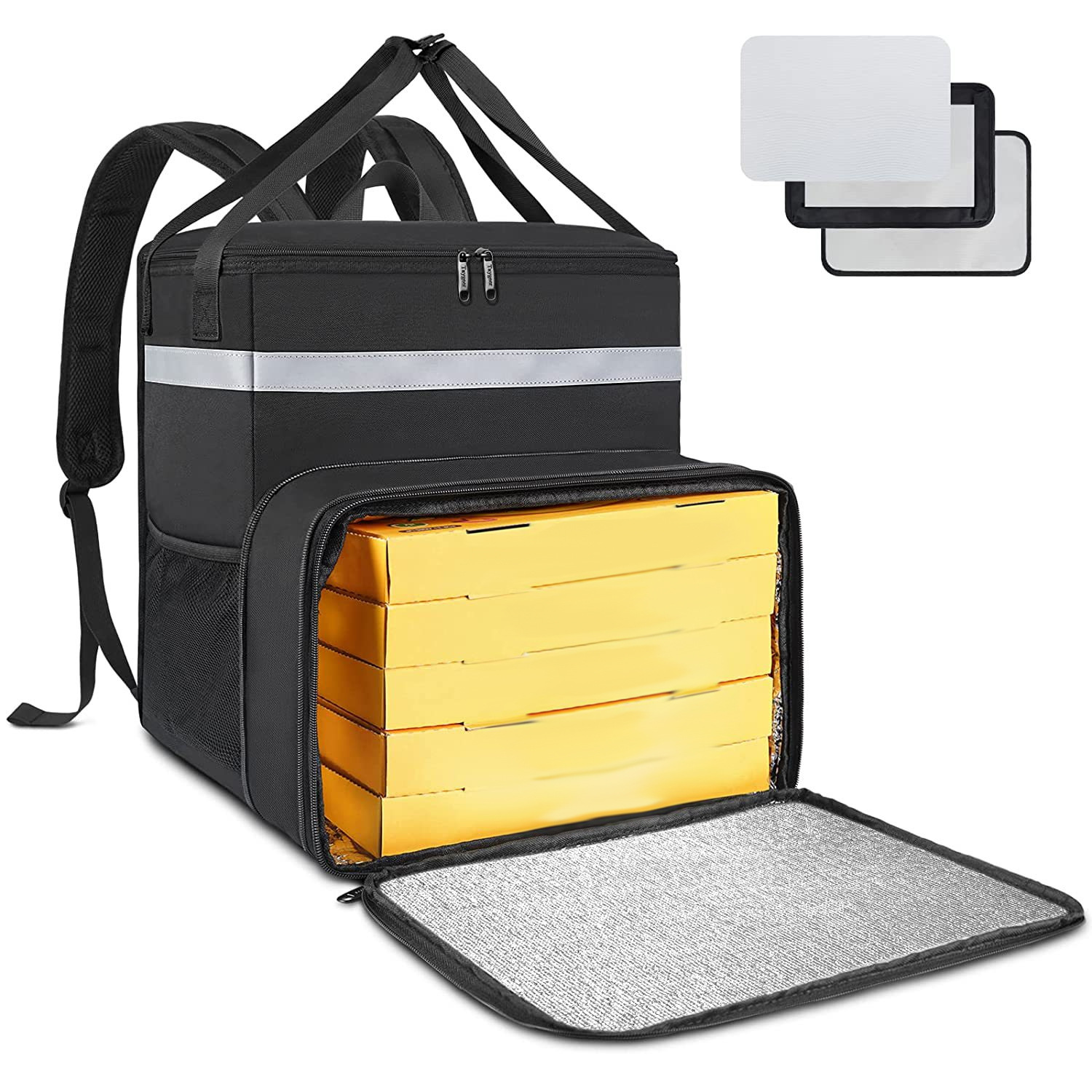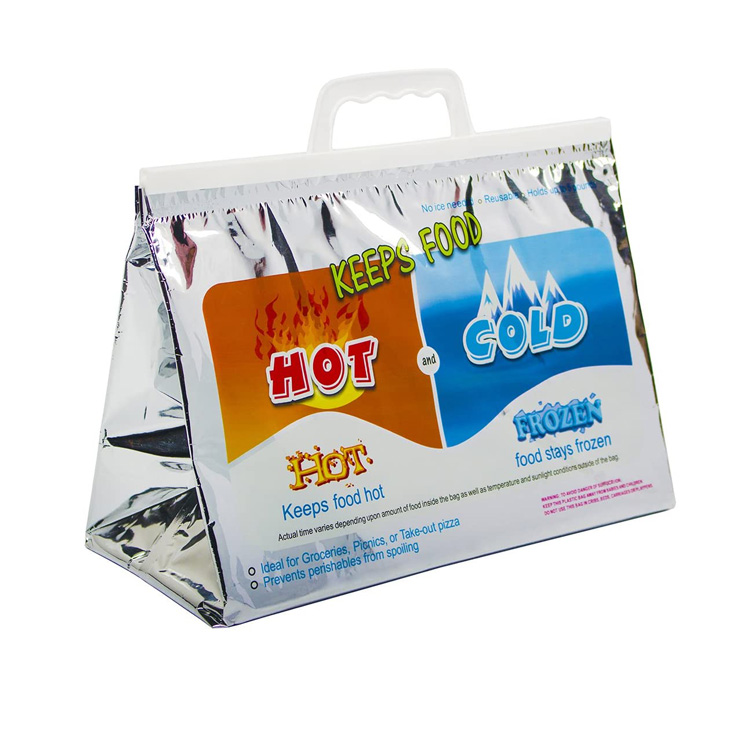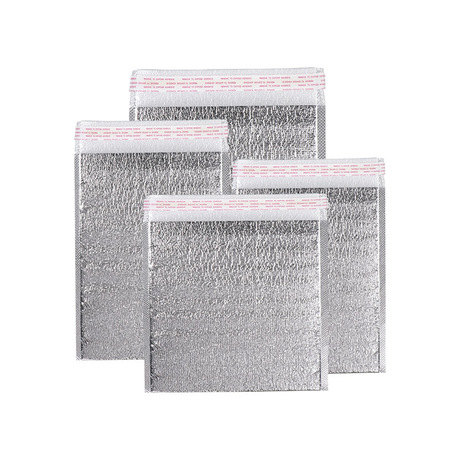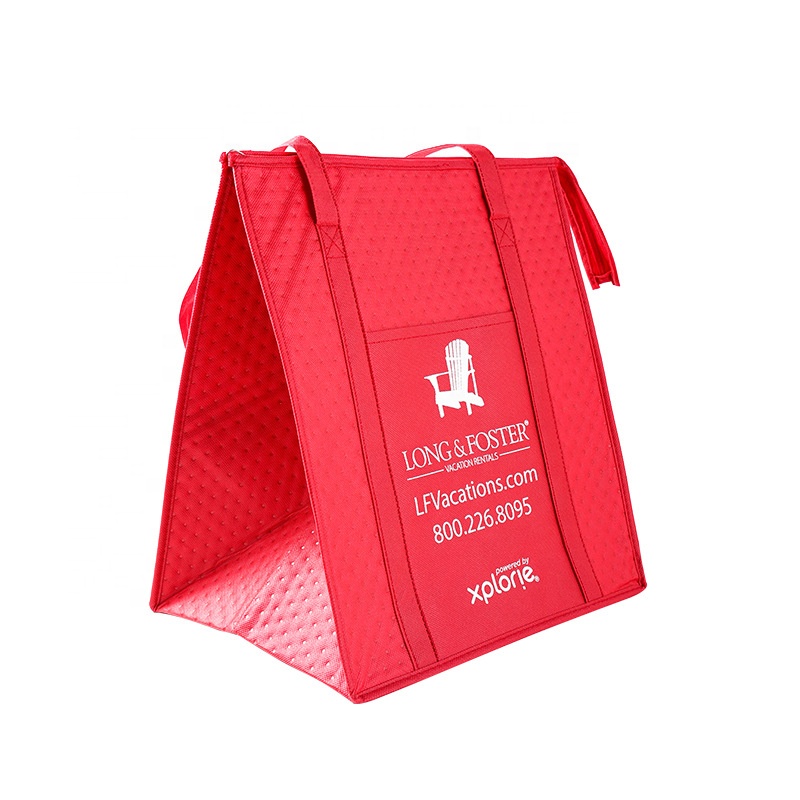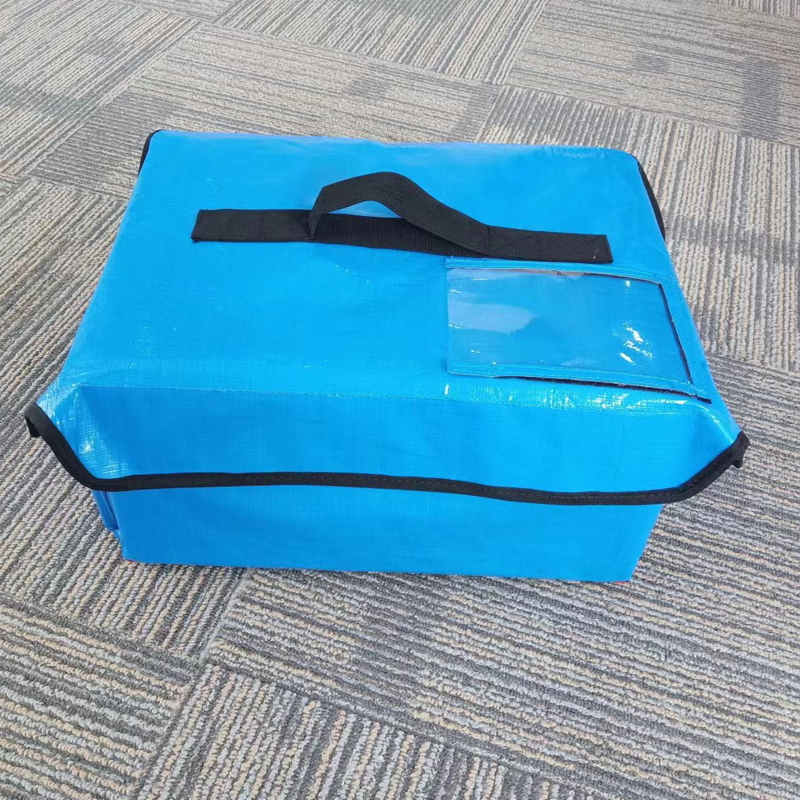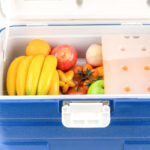In the dynamic landscape of modern commerce, the demand for frozen food has been on a steady rise. Whether it’s the convenience – driven consumer purchasing frozen ready – meals or the food service industry stocking up on frozen ingredients, the need for reliable frozen food delivery has become more crucial than ever. At the heart of ensuring the integrity of frozen food during transit lies the use of insulated boxes. This comprehensive guide will explore everything you need to know about insulated boxes for frozen food delivery, from their significance to the various types available and how to choose the right one.
The Significance of Insulated Boxes in Frozen Food Delivery
Preserving Product Quality
Frozen food is highly sensitive to temperature fluctuations. Even a slight increase in temperature can lead to partial thawing, which not only affects the texture and taste of the food but also promotes the growth of harmful bacteria. According to a study by the Food Safety and Inspection Service (FSIS), a temperature increase of just 5°F above the recommended – 18°C (0°F) can double the rate of quality degradation in frozen meats. Insulated boxes are designed to act as a barrier against external heat sources. They maintain the low – temperature environment required to keep frozen food in its optimal state, ensuring that it reaches the consumer in the same condition as when it was initially packaged.
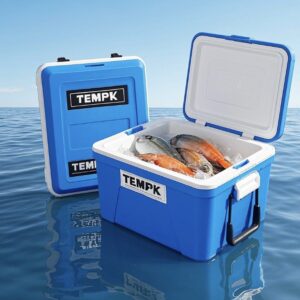
Reducing Food Waste
In the United States alone, the USDA estimates that about 30 – 40% of the food supply goes to waste. A significant portion of this waste in the frozen food category is due to improper transportation and storage. Insulated boxes play a vital role in reducing this waste. By keeping frozen food at the correct temperature, they prevent spoilage, extending the shelf – life of the products. For instance, a local grocery store that uses high – quality insulated boxes for its frozen food deliveries can reduce the amount of thawed and spoiled food, saving money and resources in the process.
Meeting Consumer Expectations
Today’s consumers are more demanding than ever when it comes to the quality of the products they purchase. When ordering frozen food online, they expect it to arrive frozen and in perfect condition. A survey by Consumer Reports found that over 80% of consumers would be less likely to order frozen food from a retailer if it arrived thawed or in a sub – optimal state. Insulated boxes help businesses meet these high consumer expectations. By providing a reliable means of maintaining the frozen state of the food during delivery, they enhance customer satisfaction and loyalty.
Types of Insulated Boxes for Frozen Food Delivery
Styrofoam (Expanded Polystyrene) Insulated Boxes
Styrofoam insulated boxes are one of the most commonly used types in the frozen food delivery industry. They are made of expanded polystyrene, which has excellent insulating properties. The structure of Styrofoam consists of tiny air – filled beads, and air is a poor conductor of heat. This property makes Styrofoam highly effective in reducing heat transfer. These boxes are lightweight, which helps in reducing transportation costs. They are also relatively inexpensive to produce, making them a popular choice for many food delivery companies. However, Styrofoam is not biodegradable, and its disposal can pose environmental challenges.

Vacuum – Insulated Boxes
Vacuum – insulated boxes are a more advanced option for frozen food delivery. These boxes feature a double – walled construction with a vacuum – sealed space between the walls. The absence of air in the vacuum layer significantly reduces heat transfer through conduction and convection. This makes vacuum – insulated boxes extremely efficient at maintaining low temperatures for extended periods. They are often used for long – distance deliveries or when transporting high – value frozen products. For example, a company that ships artisanal frozen desserts across the country may rely on vacuum – insulated boxes to ensure that the products reach their destination in perfect condition. Although they are more expensive than Styrofoam boxes, their superior performance and durability can justify the cost for certain applications.
Corrugated Cardboard Boxes with Insulation Liners
Corrugated cardboard boxes with insulation liners are another popular choice. The outer layer of corrugated cardboard provides structural strength, protecting the contents from physical damage during transit. The insulation liner, which can be made of materials such as bubble wrap with a reflective layer or recycled paper – based insulation, helps in retaining the cold inside the box. These boxes are more environmentally friendly compared to Styrofoam boxes, as both the cardboard and many insulation liners are recyclable. They are suitable for a variety of frozen food delivery applications, from local grocery deliveries to small – scale food service providers.
Foil – Lined Insulated Bags
Foil – lined insulated bags are a flexible and convenient option for frozen food delivery. The inner foil lining reflects heat away from the contents, while the insulating material (such as foam or polyester fiber) provides additional thermal protection. These bags are lightweight, easy to carry, and can be folded for storage when not in use. They are often used for individual or small – quantity frozen food deliveries, such as a local bakery delivering frozen cakes or a meal – kit service sending out frozen ingredients. Foil – lined insulated bags are also relatively cost – effective, making them a popular choice for businesses looking for an affordable yet effective solution for frozen food transportation.
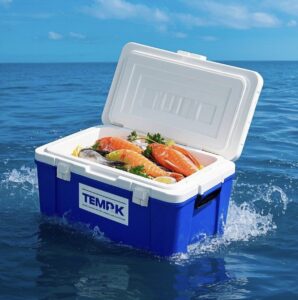
Factors to Consider When Choosing Insulated Boxes for Frozen Food Delivery
Temperature Requirements
The first and most critical factor to consider is the specific temperature requirements of the frozen food you are delivering. Different types of frozen food may have slightly different ideal storage temperatures. For example, frozen vegetables can generally be stored at – 18°C (0°F), while some frozen seafood may require a slightly lower temperature, around – 20°C (- 4°F). Make sure to choose an insulated box that can maintain the required temperature range for the duration of the delivery. Some boxes come with temperature – monitoring features, such as built – in thermometers or sensors that can be connected to a mobile app, allowing you to track the temperature inside the box during transit.
Delivery Distance and Duration
The distance the frozen food needs to travel and the expected duration of the delivery are also important considerations. For short – distance deliveries within a local area, a less – expensive and less – insulating box may be sufficient. However, for long – distance deliveries, especially those that may take several days or cross different climate zones, a more advanced and highly insulating box is necessary. Vacuum – insulated boxes, for instance, are better suited for long – distance shipments as they can maintain the low temperature for a longer time. Additionally, if the delivery is likely to be delayed due to factors such as traffic or customs clearance, choosing a box with better insulating capabilities can help ensure that the food remains frozen.
Box Size and Capacity
The size and capacity of the insulated box should be appropriate for the quantity of frozen food you need to deliver. If the box is too large, it may not be able to maintain the cold temperature efficiently as there will be more empty space for heat to circulate. On the other hand, if the box is too small, it may not be able to accommodate all the items, leading to overcrowding and potential damage to the food. Measure the dimensions of the frozen food items and calculate the total volume to determine the right box size. Some insulated boxes are available in modular or adjustable designs, allowing you to customize the internal space according to your specific needs.
Durability and Stackability
During transportation, insulated boxes are often subjected to handling, stacking, and potential rough treatment. Therefore, it’s essential to choose boxes that are durable and can withstand these conditions. Look for boxes made of high – quality materials with sturdy construction. Boxes with reinforced corners or thick walls are more likely to resist damage. Additionally, stackability is an important feature, especially if you are shipping multiple boxes at once. Stackable boxes can save space in the delivery vehicle and make the transportation process more efficient. Some boxes are designed with interlocking features or flat tops and bottoms to facilitate easy stacking.
Cost – Effectiveness
Cost is always a significant factor in any business decision. When choosing insulated boxes for frozen food delivery, you need to balance the cost of the box with its performance and durability. While it may be tempting to choose the cheapest option available, it’s important to consider the long – term costs. A low – quality box that doesn’t maintain the temperature well may result in spoiled food, leading to losses for your business. On the other hand, a high – end, expensive box may not be necessary if your delivery requirements are relatively simple. Calculate the cost per delivery, taking into account factors such as the cost of the box, the cost of any additional insulation materials (such as ice packs), and the potential cost of food waste due to improper insulation. This will help you determine the most cost – effective option for your business.
Environmental Impact
In today’s environmentally conscious world, the environmental impact of the packaging materials you use is an important consideration. As mentioned earlier, some types of insulated boxes, such as Styrofoam, are not biodegradable and can contribute to environmental pollution. On the other hand, options like corrugated cardboard boxes with recyclable insulation liners or reusable insulated bags are more sustainable choices. Consider the disposal or recycling options for the boxes after use. Some companies are now offering return programs for used insulated boxes, which can help reduce waste and lower the overall environmental impact of your frozen food delivery operations.
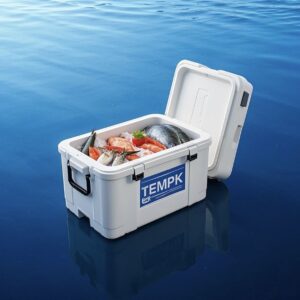
Best Practices for Using Insulated Boxes in Frozen Food Delivery
Proper Packaging
The way you pack the frozen food inside the insulated box can significantly affect its ability to maintain the correct temperature. First, make sure that the frozen food is properly wrapped and sealed. Any exposed areas can allow heat to penetrate and cause the food to thaw. Use additional insulation materials, such as bubble wrap or foam sheets, to fill any gaps between the food items and the walls of the box. This helps to minimize the movement of air inside the box, which can carry heat. Place the frozen food in the center of the box, as this is the area that will be the most insulated. If you are using ice packs or gel packs to help maintain the cold temperature, place them around the food, making sure they are in contact with the items to provide maximum cooling.
Temperature Monitoring
Regularly monitoring the temperature inside the insulated box during the delivery process is crucial. As mentioned earlier, some boxes come with built – in temperature – monitoring devices. If your box doesn’t have this feature, you can use external thermometers or temperature – tracking sensors. Check the temperature at the start of the delivery, during any stops (such as for loading or unloading), and at the end of the delivery. If the temperature exceeds the recommended range, take immediate action. This could involve adding more ice packs, adjusting the packaging, or if possible, finding a cooler environment to store the box until it can be delivered. Temperature monitoring not only helps to ensure the quality of the frozen food but also provides valuable data that can be used to improve your delivery processes in the future.
Handling and Storage
Proper handling and storage of the insulated boxes are essential for maintaining the integrity of the frozen food. When loading and unloading the boxes, handle them with care to avoid damaging the insulation. Avoid dropping the boxes or subjecting them to excessive force. Store the boxes in a cool, dry place when they are not in use. If the boxes are exposed to high temperatures or humidity, it can affect the performance of the insulation. Additionally, make sure that the boxes are kept clean. Any dirt or debris on the outside of the box can act as a conductor of heat, reducing the effectiveness of the insulation. Regularly clean the boxes with a mild detergent and water, and allow them to dry thoroughly before using them again.
Training Your Staff
If you have a team involved in the frozen food delivery process, it’s important to provide them with proper training on the use of insulated boxes. Train your staff on how to properly pack the boxes, how to monitor the temperature, and how to handle the boxes during transportation. Make sure they understand the importance of maintaining the correct temperature for the frozen food. Provide them with clear guidelines on what to do if they notice any issues, such as a box that seems to be losing its insulation or a temperature that is rising. Well – trained staff can make a significant difference in ensuring the success of your frozen food delivery operations.
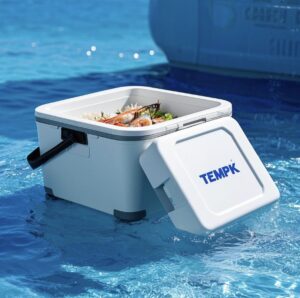
Innovations in Insulated Box Technology for Frozen Food Delivery
Smart Insulated Boxes
The advent of the Internet of Things (IoT) has led to the development of smart insulated boxes. These boxes are equipped with sensors that can monitor not only the temperature but also other factors such as humidity, vibration, and the location of the box. The data collected by these sensors is transmitted in real – time to a central server or a mobile app, allowing you to track the condition of the frozen food throughout the delivery process. For example, if a box is exposed to excessive vibration during transportation, which could potentially damage the food, you can be alerted immediately. Smart insulated boxes also have the potential to integrate with other logistics systems, such as route – planning software, to optimize the delivery process and ensure that the frozen food reaches its destination in the best possible condition.
Biodegradable and Sustainable Insulation Materials
As the demand for more sustainable packaging solutions grows, there has been a significant amount of research and development in biodegradable and sustainable insulation materials. Some companies are now using materials such as bamboo – based insulation, recycled paper – pulp insulation, and even mushrooms – based insulation. These materials offer similar insulating properties to traditional materials but are more environmentally friendly. They are biodegradable, compostable, or made from renewable resources. For instance, a company that uses bamboo – based insulation in its insulated boxes can reduce its carbon footprint and appeal to environmentally conscious consumers. Additionally, some of these sustainable insulation materials are also cost – competitive, making them a viable option for businesses looking to make their frozen food delivery operations more sustainable.
Phase – Change Material (PCM) Integration
Phase – change materials are substances that can absorb or release large amounts of heat during a phase transition, such as from solid to liquid or vice versa. PCMs are increasingly being integrated into insulated boxes for frozen food delivery. These materials can store cold energy when the temperature is low and release it when the temperature inside the box starts to rise. For example, a PCM – based insulation panel can be placed inside an insulated box. When the box is being loaded with frozen food in a cold storage facility, the PCM absorbs the cold and stores it. During the delivery, if the external temperature starts to warm up, the PCM releases the stored cold, helping to maintain the low temperature inside the box. This technology can extend the time that the frozen food can remain at the correct temperature, especially during longer deliveries or in challenging environmental conditions.
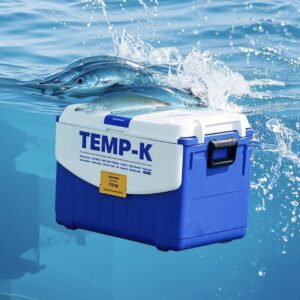
Frequently Asked Questions (FAQs)
How long can an insulated box keep frozen food cold?
The length of time an insulated box can keep frozen food cold depends on several factors, including the type of box, the quality of the insulation, the initial temperature of the food, the external temperature, and the presence of additional cooling agents like ice packs. On average, a well – insulated box with ice packs can keep frozen food cold for 12 – 24 hours in normal ambient temperatures. However, vacuum – insulated boxes or boxes with advanced insulation materials and PCM integration can maintain the cold temperature for even longer, sometimes up to 48 hours or more.
Can I reuse insulated boxes for frozen food delivery?
Yes, many insulated boxes can be reused. Boxes made of materials such as corrugated cardboard with insulation liners and some vacuum – insulated boxes are designed for multiple uses. However, it’s important to inspect the box for any signs of damage, such as tears in the insulation or dents in the outer shell, before reusing it. If the box has been damaged, it may not be able to maintain the correct temperature. Additionally, make sure to clean the box thoroughly between uses to prevent the growth of bacteria or the transfer of odors.
Are there any regulations regarding the use of insulated boxes for frozen food delivery?
Yes, there are regulations in place to ensure the safety and quality of frozen food during transportation. In the United States, the Food and Drug Administration (FDA) has regulations that govern the temperature control of food during storage and transportation. These regulations require that frozen food be maintained at or below – 18°C (0°F) during transit. Insulated boxes used for frozen food delivery should be able to meet these temperature requirements. Additionally, there may be regulations regarding the materials used in the boxes, especially if they come into direct contact with the food. For example, the materials should be food – grade and non – toxic.
How do I dispose of insulated boxes?
The disposal method for insulated boxes depends on the type of box. Styrofoam boxes are not biodegradable and should be recycled if possible. Many recycling centers now accept Styrofoam, but it may need to be separated from other recyclables. Corrugated cardboard boxes with insulation liners can usually be recycled with regular cardboard if the insulation is made of recyclable materials. Foil – lined insulated bags may be recyclable in some areas, but it’s best to check with your local recycling facility. Some companies also offer take – back programs for used insulated boxes, which can be a convenient way to ensure proper disposal and potentially earn some credit towards new boxes.

Conclusion
Insulated boxes are an essential component of the frozen food delivery ecosystem. They play a crucial role in preserving the quality of frozen food, reducing food waste, and meeting consumer expectations. By understanding the different types of insulated boxes available, the factors to consider when choosing them, and the best practices for using them, businesses can ensure that their frozen food deliveries are successful. The continuous innovation in insulated box technology, such as the development of smart boxes, sustainable insulation materials, and PCM integration, offers even more opportunities for improving the efficiency and effectiveness of frozen food delivery. Whether you are a small – scale local food delivery service or a large – scale national retailer, investing in the right insulated boxes for your frozen food delivery needs is a decision that can have a significant impact on your business’s success.
Share Your Experiences and Insights
We hope this guide has been helpful to you. If you have any experiences or insights regarding the use of insulated boxes for frozen food delivery, whether it’s a successful delivery story, a challenge you overcame, or a new technology you’ve tried, we’d love to hear from you. Please share your thoughts in the comment section below. Also, if you found this article useful, don’t forget to share it with your colleagues, friends, or anyone else who may be involved in the frozen food delivery industry. Sharing knowledge can help us all improve our practices and provide better – quality frozen food to consumers.







